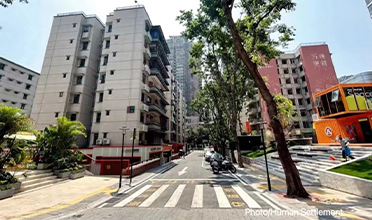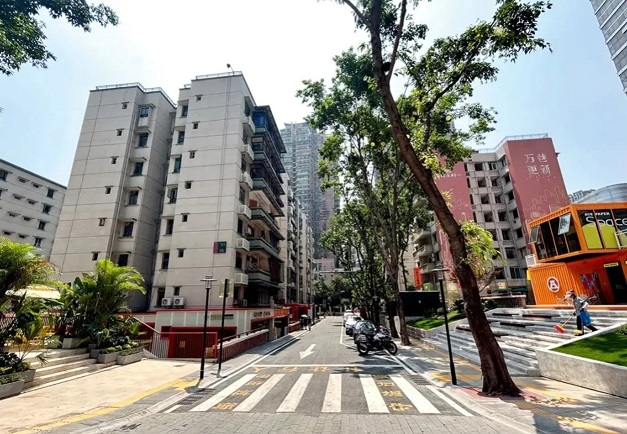



The Minzhucun Community after the urban regeneration [Photo/Human Settlement]
2.3 Digital empowerment and integrated community services in Zhejiang Province
The application and promotion of digital technology is a major highlight of the construction of integrated communities in Zhejiang Province. Zhejiang Province, through improving the top-level design, pilot demonstration, policy and mechanism innovation, and constantly cohesion of the government, mediating the society and people with multiple approaches to promote the construction of intelligent community platforms. Digital empowerment as a stimulation of community governance dynamic "new engine", not only providing security and convenience for residents’ life, but also deepening the integrated community construction work.
For example, Yinzhou District, Ningbo City, Minglou Neighborhood, Hefeng community cooperated with the jurisdiction of science and technology enterprises. Based on CIM (City Information Model) technology, they built an integrated community intelligence service platform targeted at different social groups, set up a diverse range of functional modules. Among them, the "community service" module centers around the needs of residents' daily life, providing intelligent functions such as help from home, property call, activity reservation, etc. Residents can easily find the services they need by just moving their fingers. The "Comprehensive Governance" module adopts community visualization management technology, realizes the organic integration of CIM platform and intelligent service platform and the interoperability of IOT data, and is based on the principle of "one household, one file, separated data and models", with "household" as the unit, and "community service" as the unit of different services, which builds a solid digital foundation for integrated community construction and community fine governance.
3 Reflections and Prospects for Integrated Community Practice
Connect various departments and further build a multi-sectoral governance mechanism. Although the construction and governance of the community can be seen as the bottom-up work, the top-down design should not be neglected. At present, in the process of building integrated communities, there are still widespread difficulties in departmental coordination and mediation, and the combination of the power. In the future construction of integrated communities, it will be necessary to further explore and build a multisectoral governance mechanism that combines the actual situation of each region, clarifies the division of responsibilities and powers of each stakeholder, breaks through the limitations of the past community, which was "heavy on construction, light on management, and difficult to regenerate", and provides a more complete system of institutional safeguards for the construction of integrated communities from the top-down regulations.
Grounding and further exploring the path of construction with the participation of multiple subjects. As the concentration of China's urban construction and governance process is shifted downward and authority is decentralized, the two levels of streets and communities will play an increasingly important role and become the key to grassroots construction. In the grass-roots practice of integrated community construction, localities need to further explore the working platform for the participation of multiple stakeholders, forming the construction path of "led by the government of city and county, implemented by district and neighborhood, coordinated by specific department, social unit participation, and co-created by community residents". This will promote the collaborative implementation of complete community building work among government departments, social organizations and residents at different levels, and create a community culture of co-construction, co-governance and sharing.
The construction of integrated communities should put the needs of the people in the first place, and upgrade the level of targeted and refined services of the community at the grassroots level. In the construction of integrated communities, it is necessary to adopt the working method of "urban health assessment taking before urban regeneration". Through the urban health assessments work, find out the current situation of the community, understand the actual demands of the residents, clarify the direction of the construction of integrated communities, prioritize the solution of the most urgent problems reflected by the residents, and better provide the community residents with targeted and refined services. So as to solve the "last kilometer" problem of the urban management and urban governance.
In short, the practice of building integrated communities should adhere to the people-oriented concept, take "safe and healthy, perfect facilities and orderly management" as the core objective, start from the urgent issues of people's livelihood that are of general concern to the society at the transition stage of urban development. And further improve the top-down management system, build human resources, explore working paths, and provide support for digital technology. We will make efforts to gradually and orderly make up for the shortcomings of community facilities and services, improve the living environment of the community, upgrade the level of community services, and create more "good communities" to the satisfaction of the public.
Author: Wei Wei, Ma Yunfei
China Academy of Urban Planning and Design
Source: <https://mp.weixin.qq.com/s/2PEz4GpAh2-Z6yGR-AYcig>
Translated by Zhang Chenxi